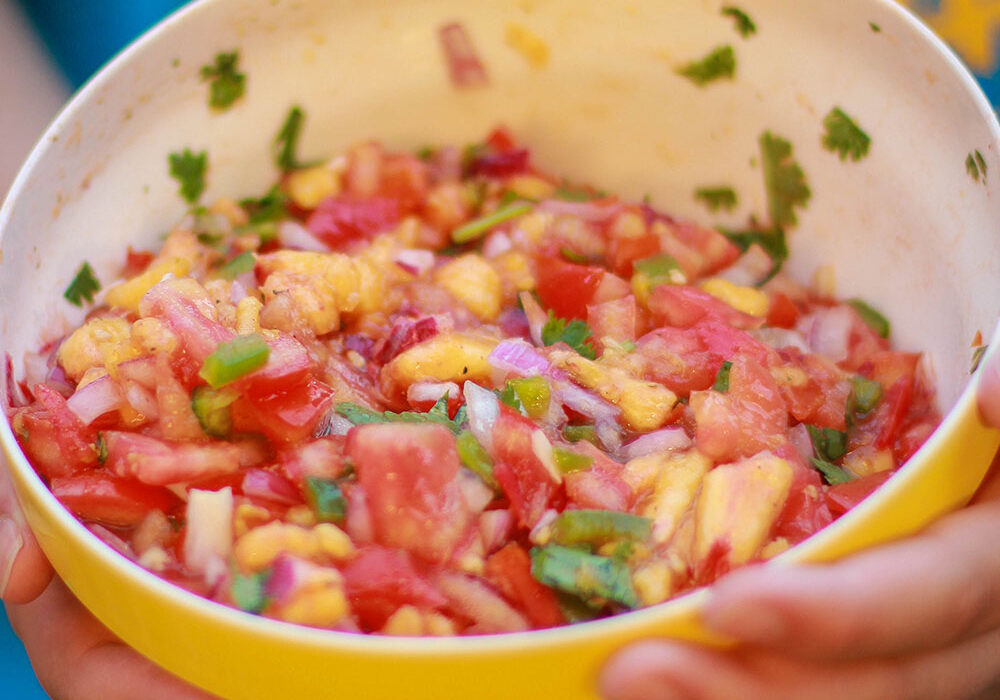Winter Greens Are Immune Boosting Foods
After holiday cookies and before Valentine’s Day chocolates, it is time to nourish yourself and your immune system with some fresh veggies. The USDA recommends two to three cups of vegetables per day for adults. Leafy greens are a delicious way to meet that recommendation. They provide fiber and a variety of vitamins, minerals, and antioxidants. Although these are nutrients we need all year round, during the winter months our immune systems are working extra hard and need all the support they can get.
Tasty options for leafy greens
My current favorite leafy greens are spinach, kale, and Swiss chard. I find myself tossing chopped spinach into lots of soups and pasta sauces this time of year. Honestly, I seem to favor different greens each year and mustard greens, collard greens, bok choy, microgreens, and beet greens are also tasty options.
I am a big fan of spinach, which has a lighter flavor than some other greens and can easily be chopped and added to smoothies, sauces, salads, and soups. It is also full of vitamins A, K, C, folate, zinc, iron, and manganese.
Kale is rich with vitamins A, K, C, and calcium. It holds its texture well in cooking and it can be steamed, stir-fried, roasted, or eaten raw. Remove the middle rib as it tends to be very tough.
Swiss chard is also a powerhouse of nutrition. It has impressive amounts of vitamins A, K, C, E, potassium, manganese, and iron. It can have colorful stalks, making it a vibrant addition to any dish.
Versatile and nutritious
Besides being loaded with nutrients that serve your immune system, greens are versatile and can be prepared in a variety of ways. Dominique Herbert, a produce employee with S&S Organic Produce and Natural Foods in Chico, says her favorite leafy greens are, “Collard greens and spinach because they are nutritious and delicious. And collards are a southern tradition.” She cooks her collard greens with vinegar, seasonings, and black-eyed peas.
Janet McCarn, administrative director for Orchard Nutrition Center in Redding, takes advantage of the versatility of baby mixed greens and prepares them in a variety of ways. “I love to sauté greens with onion and mushrooms for a delicious side to any main course. I also like to mix sautéed greens into scrambled eggs for breakfast.” During the winter months when she makes soup, she “drops a couple of handfuls of greens into the pot at the very end of cooking and lets them wilt.”
Whether you make greens the star of your meal or add them into another dish, you will reap the benefits of adding these nutrient-dense veggies to your diet.
Winter Minestrone
(adapted from FoodNetwork.com)
Makes 6-8 servings
- Olive oil
- 1 yellow onion, diced
- 3 carrots, diced
- 3 stalks of celery, diced
- 1 medium butternut squash, peeled and diced into 1/2 inch cubes
- 4 cloves minced garlic
- 2 teaspoons chopped fresh thyme leaves
- 26-ounce can or box diced tomatoes
- 8-10 cups chicken stock
- 3-5 large kale leaves, chopped and ribs removed
- 1 bay leaf
- 2 teaspoons Kosher salt and 1 1/2 teaspoons freshly ground black pepper
- 15-ounce can cannellini beans, drained and rinsed
- 2 cups cooked small pasta, such as macaroni
- 8 to 10 ounces fresh baby spinach leaves
- 1/2 cup dry white wine
- 2 tablespoons pesto
- Freshly grated parmesan cheese, for serving
Heat 2 tablespoons of olive oil over medium heat in a large, heavy pot or Dutch oven. Add the onions, carrots, celery, squash, garlic, and thyme and cook over medium heat, stirring occasionally, for 8 to 10 minutes, until the vegetables begin to soften.
Add the tomatoes, kale, 8 cups of chicken stock, the bay leaf, salt, and pepper to the pot. Bring to a boil, then lower the heat and simmer uncovered for 30 minutes, until the vegetables are tender.
Discard the bay leaf. Add the beans and cooked pasta and heat through. The soup should be thick but if it’s too thick, add more chicken stock.
Just before serving, reheat the soup, add the spinach, and toss with 2 big spoons (like tossing a salad). Cook just until the leaves are wilted. Stir in the white wine and pesto. Depending on the saltiness of the chicken stock, add another teaspoon or two of salt to taste. Sprinkle with parmesan cheese, drizzle with olive oil and serve hot.
Sautéed Swiss Chard
Makes 4 servings
- 1 tablespoon olive oil
- 1 clove minced garlic
- 1 large bunch of Swiss chard, washed
- Salt for tasting
Heat olive oil in a large pan over medium heat. Add minced garlic and chard. Sauté until tender. Salt to taste. Serve warm.
Give your immune system a boost this winter and try one of the recipes today!
Posted in: Health & Nutrition, Localicious
Comment Policy: All viewpoints are welcome, but comments should remain relevant. Personal attacks, profanity, and aggressive behavior are not allowed. No spam, advertising, or promoting of products/services. Please, only use your real name and limit the amount of links submitted in your comment.
You Might Also Like...

The Subtlety of Heart Disease in Women
Heart Disease is Often Subtle in Women Know the Signs, What to Do, and How to Prevent It The leading cause of death among women in the United States is […]

Localicious: Salsa, Family Style!
Salsa is a summer staple in our house, and we don’t just use it as a dip for chips. We add salsa to tacos, salads, baked potatoes, burgers, fajitas, eggs, […]

Learning To Cook Gives Kids Essential Life Skills
If you’re interested in getting Sasha, or Roberto, or Tyler to eat a more diverse, well rounded, more colorful, and therefore healthier diet, cooking is the thing to do. If […]

The Sandwich Generation: Balancing Child Care And Elder Care
In 1981, sociologist Dorothy A. Miller coined the term “sandwich generation” to refer to those who care for their aging parents while also supporting their own children. The definition became […]




